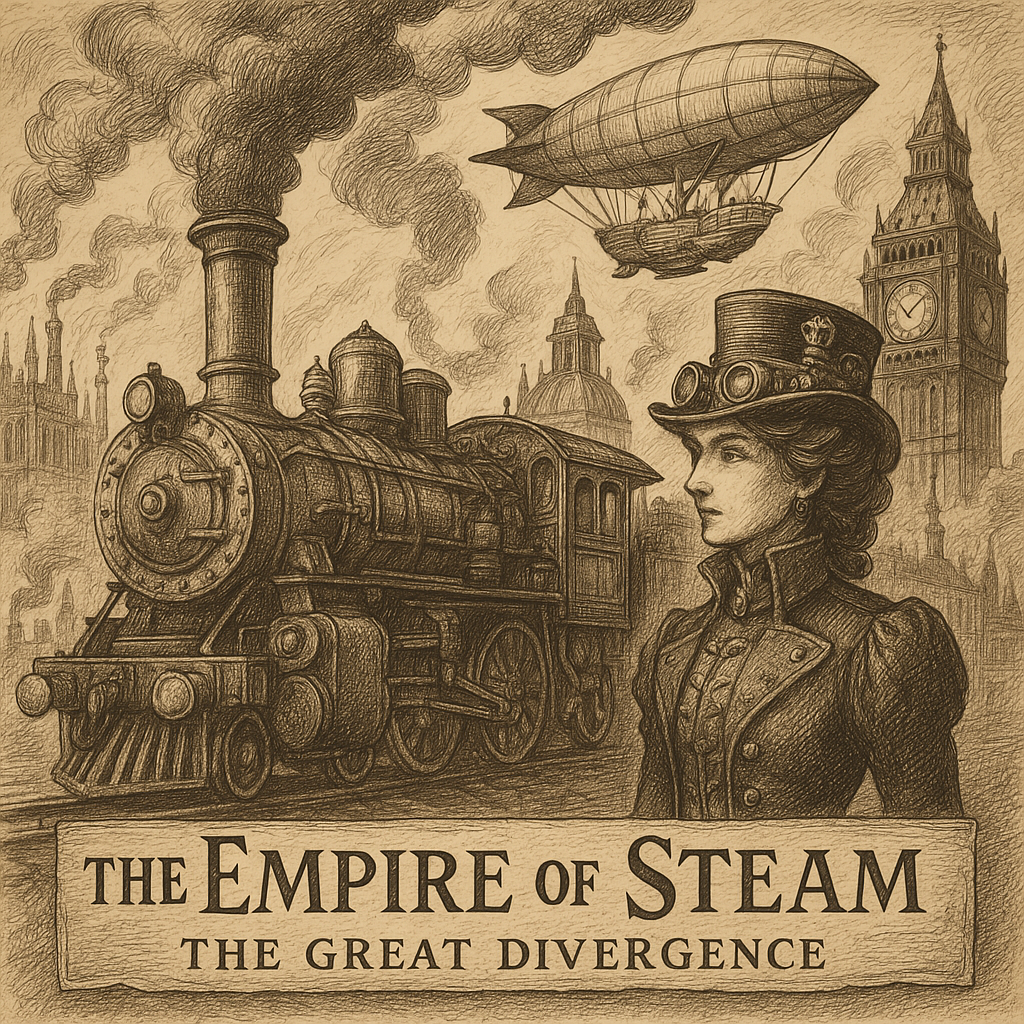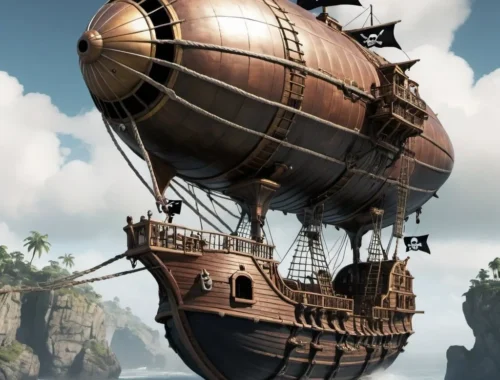
The Empire of Steam: The Great Divergence
In every history book, we are taught that the industrial world pivoted on the axis of coal, steel, and eventually electricity. But what if the arc bent a different way? What if, nestled deep in the caverns of Wales, a substance unlike any other had been discovered—a vaporous, shimmering gas known as Aetherium, capable of amplifying steam pressure by a hundredfold and bending the laws of science into something that felt eerily close to magic?
This is the Great Divergence.
The year was 1837. Queen Victoria had just ascended the throne, and while the world above celebrated her coronation, something else stirred far beneath it. Welsh miners broke into an uncharted cavern glowing with phosphorescent mist. When this strange gas—later dubbed Aetherium—was fed into rudimentary boilers, machines that once sputtered now roared to life. With Aetherium, steam engines didn’t just power locomotives. They could levitate platforms, automate factory systems, and drive inventions once relegated to dream.
By 1843, Parliament enacted the Etheric Advancement Act, ushering in the Second Steam Renaissance. Inventors, aristocrats, and rogue mechanics alike flooded the streets with gears, copper, and fire in their eyes. London’s skyline bristled with smokestacks and sky-rails. Universities opened colleges of Etheric Engineering and Clockwork Sciences. By 1850, the Queen’s Navy had commissioned the first inter-atmospheric dirigible: The Sovereign’s Reach.
History turned on a gear’s edge.
Steamships no longer hugged the sea—they soared. Factories became multi-tiered spires of automation. Communication moved through aetheric pulse lines, sending encoded messages across the Empire in seconds. And while the upper class dined on airships lit by steam-chandeliers, machinists in soot-stained aprons toiled in underground steam chambers to keep the Empire’s heart thumping.
But the Divergence was not without consequence. Whole trades vanished overnight. The skilled became obsolete unless they adapted. The air became thick with progress—and protest. Rumors swirled of colonies armed with steamtech secrets, and whispers of a rebel engineer named Lady Adali Steamheart, who dared to challenge the Crown’s dominion from the deck of her sky-pirate vessel, The Valkyrie.
This was not just the birth of a new age. It was the splitting of a timeline, the rise of a world both beautifully impossible and dangerously alive.
The Empire of Steam had begun.



